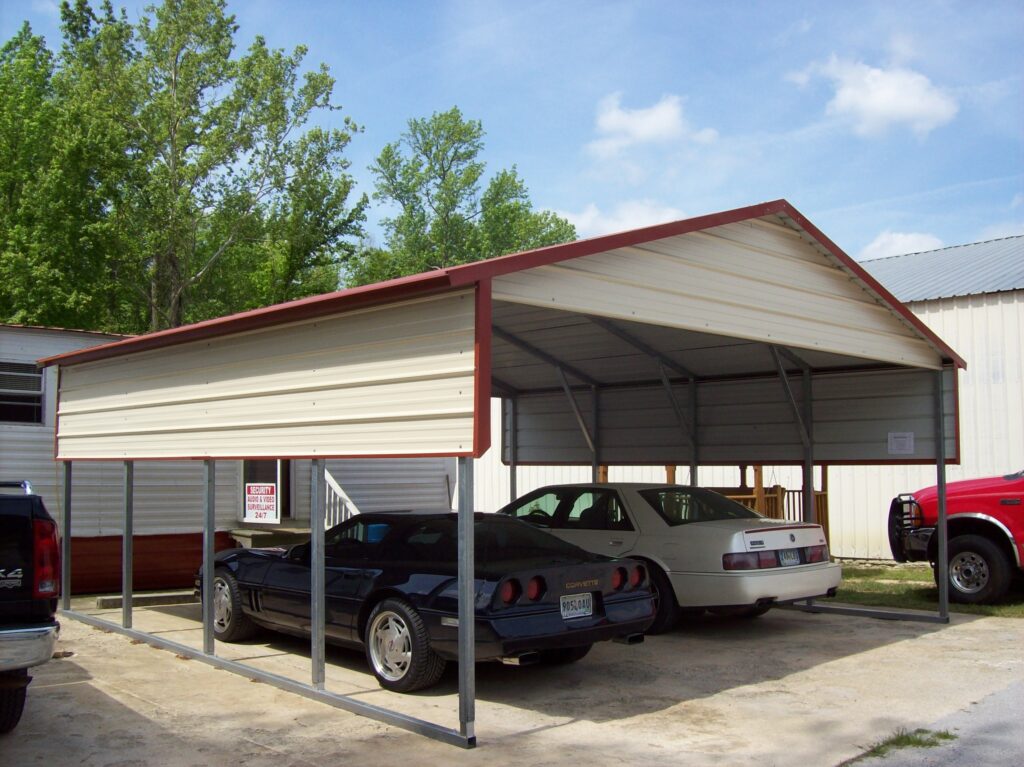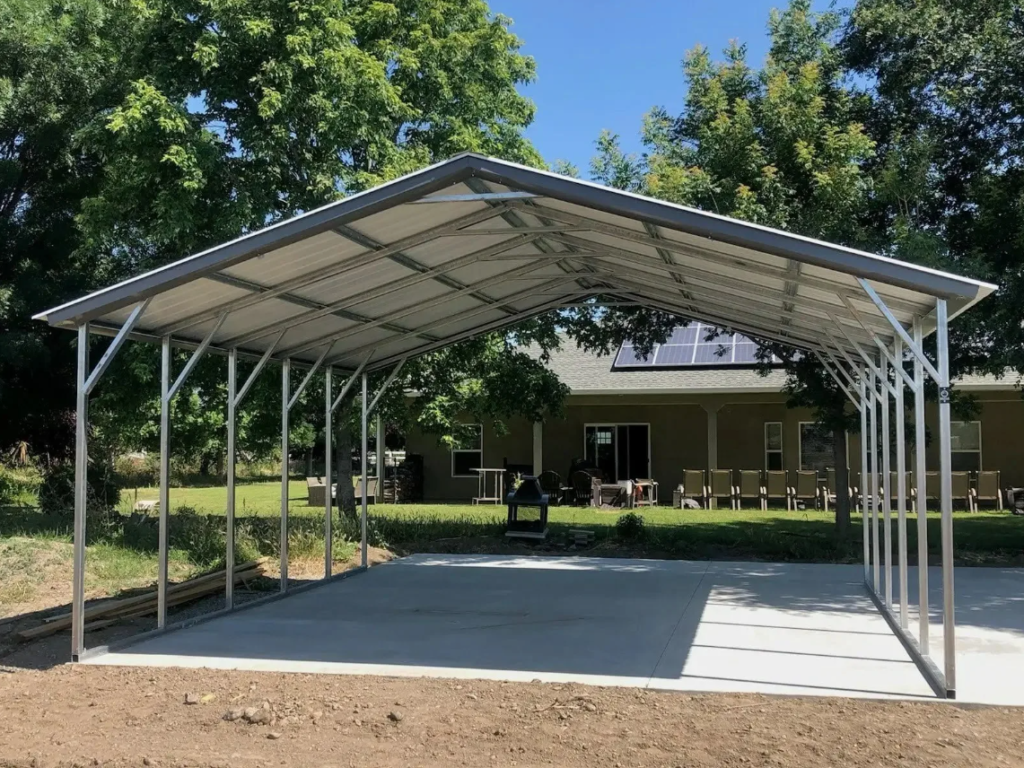Metal carports have become a popular choice for protecting vehicles from the weather. A metal carport uses a steel or aluminum frame and a roof made of metal panels. It combines durability, affordability, and design flexibility. This structure can stand alone or connect to an existing building. Homeowners, businesses, and public facilities all use metal carports to protect cars, trucks, or even machinery.
Practical And Flexible
Metal carports suit many kinds of buildings. They work well for both residential and commercial uses. Homeowners often install single or double carports beside houses or in driveways. A standard residential carport measures about 6 meters by 6 meters. It can protect two vehicles from rain, snow, and sunlight.
Commercial buildings also benefit from metal carports. Shopping centers and office parks use large-scale carports that can cover dozens of parking spaces. For instance, many supermarkets have added carport. It not only sheltered cars but also supported solar panels, reducing the supermarket`s energy bills by 20%.
Industrial facilities also favor metal carports for equipment storage. Their open-sided structure allows easy access for forklifts and trucks. Agricultural sites use them to shelter tractors or feedstock.
Metal carports are also suitable for transport hubs, like airports or train stations. Their modular design allows fast installation and easy expansion. A 50-meter-long metal carport can be built within one week using prefabricated steel frames.

How To Design a Metal Carport?
Good design ensures that a metal carport performs well for decades. The first consideration is local climate. Areas with heavy snow or strong wind need stronger steel beams and thicker roof panels. For example, a carport in Canada may require a snow load capacity of 150 kg/m². In contrast, a carport in southern regions may only need 50 kg/m².
The second design factor is foundation stability. Even though carports are lighter than full buildings, they still need solid ground. Most designs use concrete footings to anchor steel columns. For uneven or soft soil, engineers use larger footings or add steel reinforcements.
The roof type also matters. Gable roofs drain water efficiently and resist wind pressure. Flat roofs save material and look modern but need better drainage. When the carport connects to a house, the roof slope must match to avoid leaks.
Designers must also consider dimension planning. The width of a single carport should be at least 3 meters. For two vehicles, 6 meters is the minimum. The height should exceed 2.2 meters for SUVs or trucks.
Corrosion protection is another key factor. Galvanized steel or powder-coated finishes help resist rust in humid or coastal areas. Regular maintenance checks, such as repainting every five years, can extend the carport’s lifespan to over 25 years.

Lastly, aesthetic coordination improves the carport’s appeal. Matching colors and roof profiles with nearby buildings creates a unified look. A well-designed metal carport protects vehicles and enhances property value.
Why steel structure carports?
A steel structure gives the metal carport superior strength and longevity. Steel has a high strength-to-weight ratio, which allows the structure to span large areas with fewer columns. For example, a 12-meter-wide carport can use only two central beams instead of multiple supports, giving drivers more parking space and easier maneuvering.
The second advantage is fast installation. Most steel carports use prefabricated components. Workers can assemble a medium-size carport in two to three days. Compared to traditional concrete structures, which may take weeks, this saves significant time and labor costs.
Steel carports also offer design flexibility. Manufacturers can cut and shape steel beams precisely according to the design. This allows curved roofs, modern facades, or integration with solar panels. In some smart parking projects, steel carports support both vehicles and solar power systems, generating up to 5 kW per unit.
Durability is another key benefit. A galvanized steel frame can last 30 years or more with minimal maintenance. Steel does not warp, crack, or rot like wood. It also resists termites and fire. In case of strong storms, steel frames provide stable protection due to their rigid joints and wind-resistant connections.

Finally, steel structures are eco-friendly. Over 80% of structural steel can be recycled. This reduces waste and helps meet modern green building standards. A steel carport’s recyclability makes it a sustainable choice for both small property owners and large commercial projects.
Good Cost-effectiveness
Metal carports are also known for cost efficiency. The lightweight design reduces foundation requirements and saves material costs. The components of the carport are all made in advance by the factory, and the construction cycle is very short. This greatly reduces the cost of the metal carport.
Maintenance is another area where metal carports save money. A basic steel structure requires only periodic cleaning and repainting. If proper anti-corrosion maintenance is obtained, the maintenance cost will stay below 5% of the initial investment.
In addition, most of the components of the metal carport can be reused. Once the carport is no longer needed, people can easily use the components elsewhere.
Metal carports offer a smart, durable, and cost-effective way to protect vehicles and outdoor assets. When properly designed, they withstand harsh weather and require little upkeep. For anyone seeking a reliable shelter that combines practicality and modern style, the metal carport remains one of the best construction choices today.
Post time: Nov-05-2025

